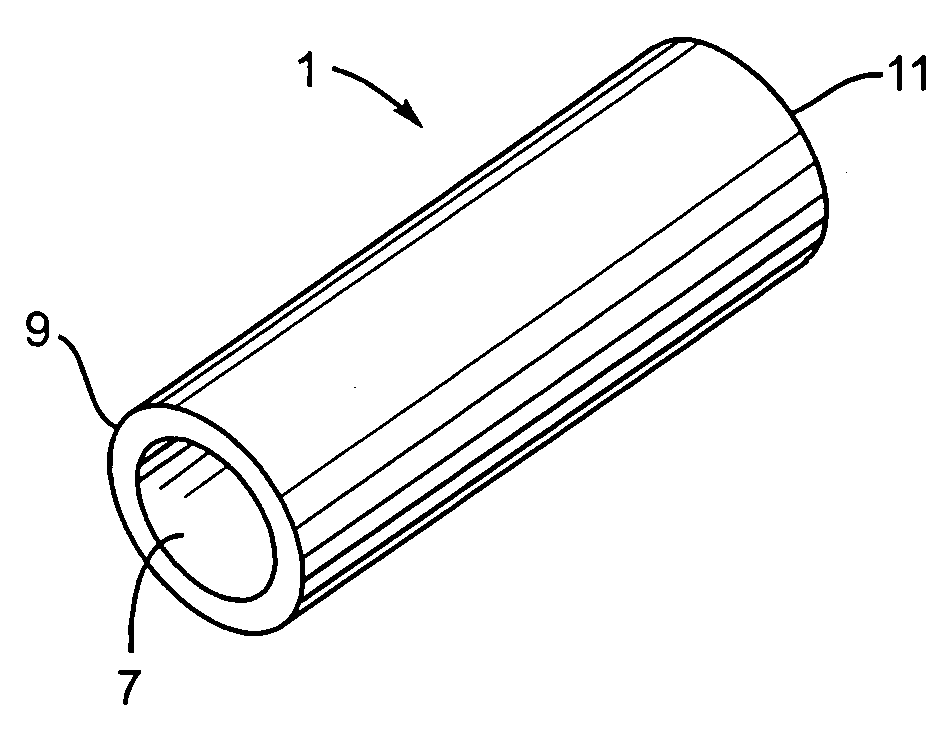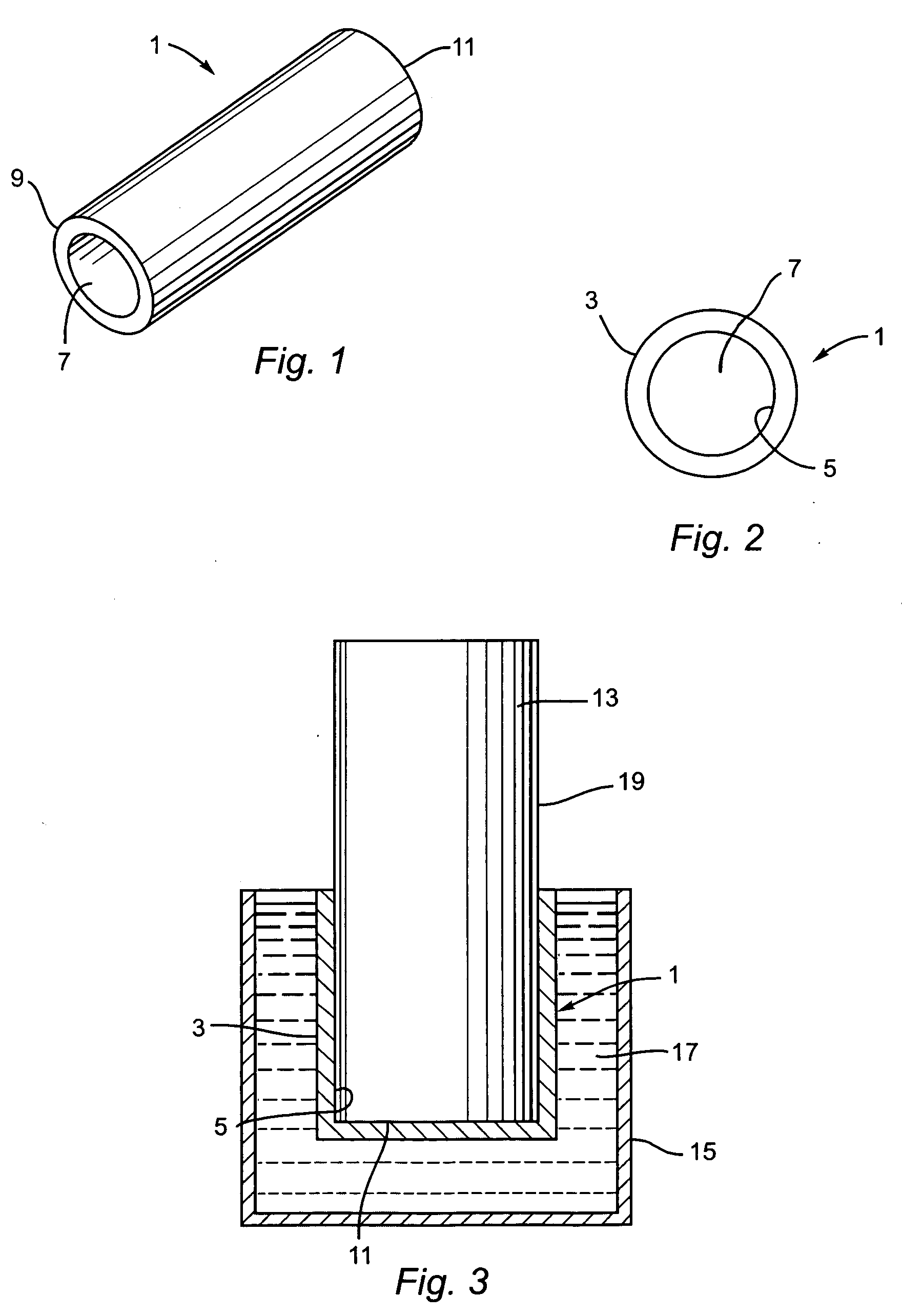Biocompatible implant device
- Summary
- Abstract
- Description
- Claims
- Application Information
AI Technical Summary
Benefits of technology
Problems solved by technology
Method used
Image
Examples
Embodiment Construction
[0016]FIG. 1 illustrates an implant device 1. Preferably implant device 1 is made of an elastic, solid biocompatible and non-hemophilic device having a modulus of elasticity between about 10 kPa and about 100 MPa. More preferably, the implant device is of tubular shape. FIG. 2 shows the implant device 1 as viewed from the side. The implant device has an outer surface 3 and an inner surface 5. The thickness of the implant device 1, measured as the distance between the outer surface 3 and the inner surface 5 is uniform and less than about 5 mm. In a preferred embodiment, the implant device 1 has a pore size of less than 10 microns that prevents growth and passage of cells from outer surface 3 to inner surface 5, while allowing water and nutrient transport from outer surface 3 to inner surface 5.
[0017] The implant device 1 has an opening 7, preferably generally circular at a first end 9. An opposite end 11 may be open to allow for flow, such as blood flow, through the implant 1, or cl...
PUM
| Property | Measurement | Unit |
|---|---|---|
| Fraction | aaaaa | aaaaa |
| Thickness | aaaaa | aaaaa |
| Thickness | aaaaa | aaaaa |
Abstract
Description
Claims
Application Information
 Login to view more
Login to view more - R&D Engineer
- R&D Manager
- IP Professional
- Industry Leading Data Capabilities
- Powerful AI technology
- Patent DNA Extraction
Browse by: Latest US Patents, China's latest patents, Technical Efficacy Thesaurus, Application Domain, Technology Topic.
© 2024 PatSnap. All rights reserved.Legal|Privacy policy|Modern Slavery Act Transparency Statement|Sitemap


